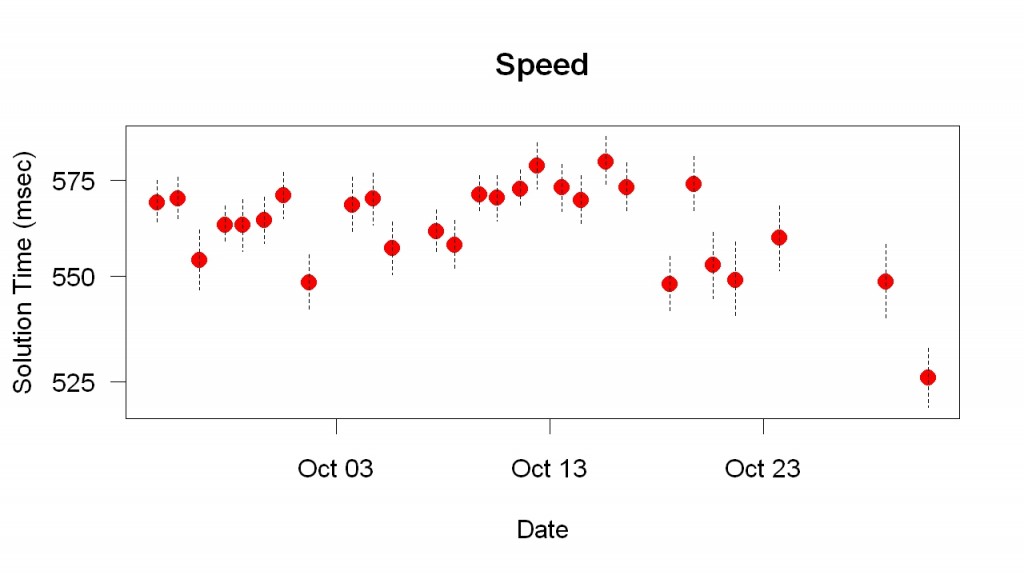The Willat Effect is the hedonic change caused by side-by-side comparison of similar things. Your hedonic response to the things compared (e.g., two or more dark chocolates) expands in both directions. The “better” things become more pleasant and the “worse” things become less pleasant. In my experience, it’s a big change, easy to notice.
I discovered the Willat Effect when my friend Carl Willat offered me five different limoncellos side by side. Knowing that he likes it, his friends had given them to him. Perhaps three were homemade, two store-bought. I’d had plenty of limoncello before that, but always one version at a time. Within seconds of tasting the five versions side by side, I came to like two of them (with more complex flavors) more than the rest. One or two of them I started to dislike. When you put two similar things next to each other, of course you see their differences more clearly. What’s impressive is the hedonic change.
The Willat Effect supports my ideas about human evolution because it pushes people toward connoisseurship. (I predict it won’t occur with animals.) The fact that repeating elements are found in so many decorating schemes and patterns meant to be pretty (e.g., wallpapers, textile patterns, rugs, choreography) suggests that we get pleasure from putting similar things side by side — the very state that produces the Willat Effect. According to my theory of human evolution, connoisseurship evolved because it created demand for hard-to-make goods, which helped the most skilled artisans make a living. Carl’s limoncello tasting made me a mini-connoisseur of limoncello. I started buying it much more often and bought more expensive brands, thus helping the best limoncello makers make a living. Connoisseurs turn surplus into innovation by giving the most skilled artisans more time and freedom to innovate.
Does the Willat Effect have practical value? Could it improve my life? Recently I decided to see if it could make me a green tea connoisseur. Ever since I discovered the Shangri-La Diet (calories without smell), I’d been drinking tea (smell without calories) almost daily but I was no connoisseur. Nor had I done many side-by-side comparisons. At home, I had always made one cup at a time.
In Beijing, where I am now, I can easily buy many green teas. I got three identical tea pots (SAMA SAG-08) and three cheap green teas. I drink tea every morning. Instead of brewing one pot, I started making two or three pots at the same time and comparing the results. I compared different teas and the same tea brewed different lengths of time (Carl’s idea).
I’ve been doing this about two weeks. The results so far:
1. The cheapest tea became undrinkable. I decided to never buy it again and not to drink the rest of my purchase. I will use it for kombucha. Two of the three teas cost about twice the cheapest one. After a few side by side comparisons I liked the more expensive ones considerably more than the cheaper one. The two more expensive ones cost about the same but, weirdly, I liked the one that cost (slightly) more a little better than the one that cost less. (Tea is sold in bulk with no packaging or branding so the price I pay is closely related to what the grower was paid. The buyers taste it and decide what it’s worth.)
2. I decided to infuse the tea leaves only once. (Usual practice is to infuse green tea two or more times.) The quality of later infusions was too low, I decided. Before this, I had found second and later infusions had been acceptable.
The Willat Effect is working, in other words. After a decade of drinking tea, my practices suddenly changed. I will buy different teas and brew them differently. I will spend a lot more per cup since (a) each cup will require fresh tea, (b) I won’t buy the cheapest tea, and (c) I have become far more interested in green tea, partly because each cup tastes better, partly because I am curious if more expensive varieties taste better. When I bought the three varieties I have now I didn’t bother to learn their names; I identified them by price. In the future I will learn the names.
To get the Willat Effect, the things being compared must be quite similar. For example, comparing green tea with black tea does nothing. I have learned a methodological lesson: That tea is a great medium for studying this not only because it’s cheap but also because you can easily get similar tasting teas by brewing the same tea different lengths of time. I haven’t yet tried different water temperatures but that too might work.
I have done similar things before. I bought several versions of orange marmalade, did side-by-side tastings, and indeed became an orange marmalade connoisseur. After that I bought only expensive versions. After a few side-by-side comparisons of cheese that included expensive cheeses, I stopped buying cheap cheese. You could say I am still an orange marmalade and cheese connoisseur but this has no effect on my current life. Because I avoid sugar, I don’t eat orange marmalade. Because of all the butter I eat, I rarely eat cheese. My budding green tea connoisseurship, however, is making a difference because I drink tea every day.
My posts about human evolution.
